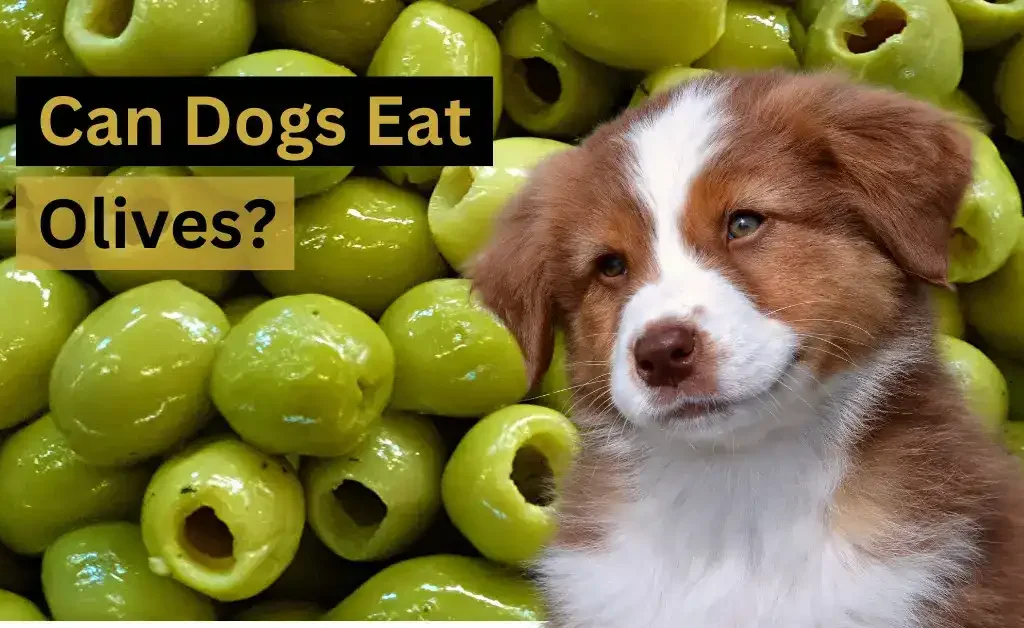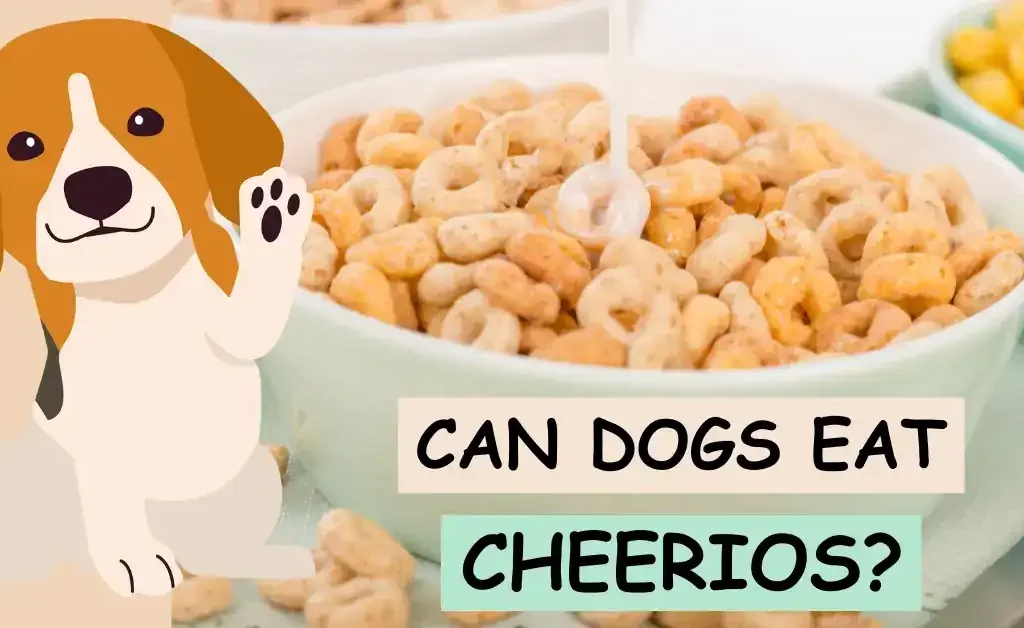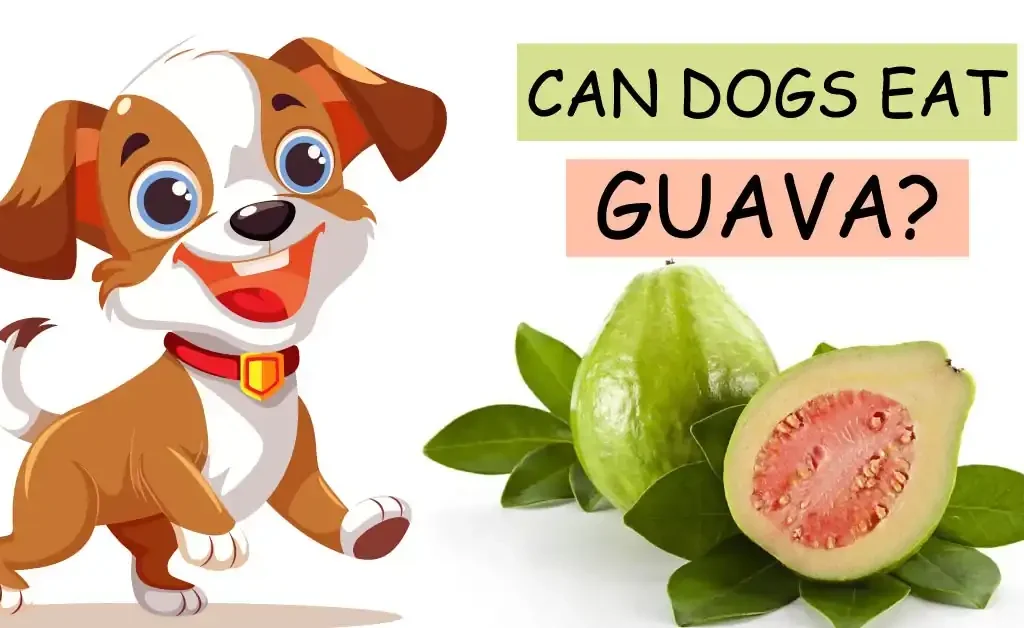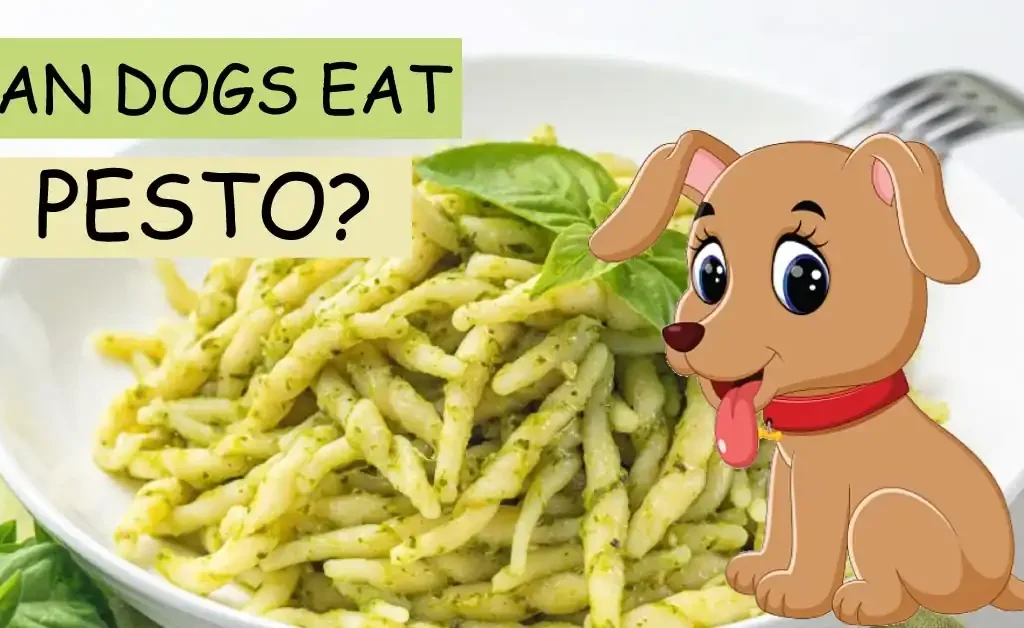Olives are highly nutritious for humans, but can dogs eat olives? Are they also beneficial for our canine friends? The answer is yes but in moderation. They pose multiple health benefits to dogs as well as humans. Per the vet’s guidance, olives must be served in a proper size for dogs.
We know it’s hard to ignore their bulging eyes and want your food from your plate. You can’t resist them to feed on the scraps from the table. All you can do is decide on a proper feeding method of human cuisines for dogs to prevent their unhealthy consequences.
Can Dogs Safely Have Olives?
Olives are generally safe and healthy for our canine companions. They contain no toxins, not even in their pits. However, olives are cured in salty water and thus may have a high sodium content. This much sodium is not suitable for our pets. Excess salt ingestion can pose several health issues, such as nutritional imbalance, GI irritations, Kidney problems, and difficulty urinating.
However, feeding your pet one or two pieces of olives won’t be harmful unless you give them a jar full of green olives. Can dogs eat green olives? You must take caution while buying commercial green olives. They may have harmful seasonings, such as garlic and spices.
Seasoned olives are toxic to dogs, as garlic is prohibited in a canine’s eating regimen. If your pet has ingested a lot of seasoned olives, you must seek a vet’s consultation immediately to prevent upcoming health issues. Moreover, overconsumption of olives with their pits also requires a vet’s inspection as they may cause obstruction in the GI tract of dogs.

Also read: Can Dogs Eat Freeze Dried Strawberries?
Nutritional Value of Olives for Dogs
Olives have a long history of providing numerous benefits to mankind. When fed in an optimum standard quantity or moderation, they also offer nutritional benefits to dogs. The following are some of the critical factors that promote the health and nourishment of your furry friend.
1. Improve Heart Health
The heart is one of the body’s primary organs, pumping blood throughout the body and regulating blood flow. Heart health is crucial for dogs because they can quickly develop cardiovascular diseases such as arrhythmias and dilated cardiomyopathy.
Olives are a rich source of mono-saturated fats, which help lower cholesterol levels and ultimately improve cardiac health. This also reduces the risk of heart diseases, such as strokes, atherosclerosis, and other CVDs.
2. Minimizes Inflammation
Olives contain a high content of antioxidants, which aid your furry friend in reducing inflammation. Antioxidants such as vitamin E and polyphenols promote your dog’s health, covering all aspects of nourishment.
If you have been ignoring your dog’s inflammation, this can lead to chronic one, which is linked to several health diseases, including allergies, arthritis, and many digestive problems. Taking all the precautions and minimizing the inflammatory effect can improve the quality of life.
3. Get Rid of Free Radicals
Olives contain antioxidants that protect your dog’s cells from free radicals, which can cause severe chronic health issues such as cancer and neurodegenerative disorders.
Dogs are exposed to stressors and environmental toxins, which can damage their cells. Antioxidants play an essential role by reacting with these free radicals and reducing the risk factors of chronic disorders.
4. Cognitive Abilities
Oleocanthal is a compound that helps improve the cognitive abilities of your canine partners. Cognitive skills are essential for dogs’ development of mental health. A sound mind aids them in navigating and tackling environmental factors and also allows them to interact with their owner’s family. Moreover, oleocanthal boosts their memory, problem-solving skills, and routine activities.
5. Aids in Skin and Coat Health
Dogs are usually prone to several skin conditions, such as allergies and hot spots, which damage skin and coat health. Olives have fats that nourish them and aid in protecting skin and coat.
Adding olives to your dog’s meal will improve skin elasticity, minimize dander, and make the coat shinier. Ask your vet consultant before adding more than the standard olives to your furry friend’s meal plan.

Read more: Perks of Feeding Ricotta Cheese to Dogs
5 Potential Health Risks of Giving Olives to Dogs
Olives have several beneficial factors supporting growth and metabolic prosperity. Still, there are some potential risk factors that a pet owner must know about before adding olives to their pet’s diet.
1. Causing Choking Hazards
Choking hazards are the real risks observed in dogs. They can lead to digestive distress and respiratory issues, which can ultimately lead to life-threatening conditions. Olives, along with pits, can cause choking. Permanently remove the pits before giving them to your furry friends. Still, seek the guidance of your vet according to their needs and conditions.
2. Digestive Distress
Introducing olives to your dog is more challenging than it seems because if the standard limit is crossed as per your furry friend’s need, it can cause digestive distress and gastrointestinal upset.
As dogs have sensitive GI tracts, olives should be given in moderation along with other food to avoid vomiting, diarrhea, and stomach pain. When introducing olives to your dog, monitoring the signs and symptoms of allergies is necessary.
3. Elevated Sodium Concentrations
Electrolytes are essential for the body’s functions. They help in mechanical actions by aiding electrical signals from nerves to everywhere in the body. One of the electrolytes, sodium, is essential in performing various metabolic actions.
Brine olives are rich in sodium, which can cause dehydration and hormonal distress in your furry friends. A high sodium concentration can also lead to electrolyte imbalance and, ultimately, seizures in dogs. Always choose low-sodium or homemade olives for your dog to minimize these potential risks.
4. Allergic Reactions
Every creature has mechanisms and conditions depending upon the circumstances and atmosphere in which it lives. Consider your pet’s underlying medical condition, which can be affected by olives in its diet. Such dogs may develop allergies to olives or olive oils.
Always seek directions from your vet before introducing any new meal to your pup. If your dog is allergic to olives, he may show hives, itching, and swelling. To identify the condition, look after your dogs after introducing olives in moderation.
5. Medicinal Interaction
Remember not to risk your dog’s health and safety. Olives interact with several medications, minimizing their efficacy and therapeutic effect. If your pet is on any medication, consult your vet to prevent negative drug-food interactions.

Tips for Feeding Olives to Dogs
Can dog eat olives? Olives contribute to our pets’ health in various ways, but you must practice caution when feeding olives to dogs. Check the following tips and tricks to find the best way to feed your pet companions olives.
1. Start Gradually
Always start with a minimum amount when introducing a new food to your pet. The same goes for olives. Start gradually and offer little chunks of this new variety to your pet’s eating regimen. Watch out for unfavorable responses or allergies. If everything runs smoothly, gradually increase the amount per day.
2. Remove Pits
Pits found in olives are hard and sharp, leading to choking hazards in dogs. You may notice GI obstruction, nausea, breathlessness, coughing, and stomach upset in dogs. Remove pits before feeding olives to your canine friends to prevent such health consequences.
3. Offer Plain Olives
Plain and unseasoned olives are best and healthy for our furry friends. Seasonings like salt, spices, herbs, etc. may lead to several health issues in dogs. Moreover, olive stuffings made with harmful ingredients also cause problems in them. Thus, it is essential to choose plain and unseasoned olives to meet the nutritional demands of your pet companions.
4. Practice Moderation
Offering a moderate amount of treats like olives is safe for canines. Excessive intake could lead to multiple gastrointestinal distress and disturbed metabolism in dogs. Consult your vet to find suitable serving sizes of olives to add to your pet’s eating regimen.
5. Proper Serving Sizes
Select a proper serving size of olives for dogs per the vet’s recommendation. It is said that 1 to 2 olives per 10 pounds of dogs per day are enough to keep them under the radius of health benefits. Calculate your dog’s dose according to their body weight using this formula. Remember to discuss your calculated dose with your vet before incorporating them.
Remember the mentioned tips and tricks while feeding olives to your pets. It is vital to seek a vet’s guidance before incorporating any new food, like olives, into your dog’s eating regimen. They can advise you based on your pet’s health condition and nutritional requirements.

Can Dogs Eat Blue Cheese Olives?
Blue cheese olives are highly discouraged from being added to a dog’s eating regimen. They are toxic to some breeds. As dairy products like milk, eggs, or cheese may prompt health issues in dogs, we must not feed blue cheese olives to our furry friends.
Most dog breeds are lactose intolerant as they don’t have a lactase enzyme in their GI to break down lactose into simpler forms. Thus, these dairy products could generate digestive discomfort in canines and may lead to pancreatitis. As responsible pet owners, we must avoid foods rich in cheese for dogs.
5 Vet-Approved Olive Treats for Dogs
Several options for dogs are approved by vets, as mentioned below. Although these are the recommended approved olives, always ask your vet before offering your furry friend a new diet or olive treats.
1. Olive Oil Biscuits
These are crunchy biscuits made with natural ingredients and olive oil, which should be 100% pure. These biscuits should be given in moderation for more benefits and not lead towards risk factors associated with high concentrations of olives.
2. Olive Oil Chew
This soft and chewy meal is incorporated with olive oil and antioxidants. Antioxidants are essential in aiding free radicals present in our body. These free radicals are toxic and can lead to cancerous cell growth.
3. Olive Drops for Canine Care
These drops of olive oil add nutrition to your dog’s daily meal or diet plan. This makes your dog’s meal rich in nutritional value essential for their daily activities and mental health.
4. Olive Bites for Furry Friends
These are bite-sized meals with olive oil and natural flavorings. Because of its small size, it doesn’t cause choking hazards and ultimately does not lead to any gastrointestinal issues.
5. Whisker Olive Treats
These treats are made with olive oil and essential vitamins, providing several health benefits to our canine partners.
Are olive leaves toxic? Olive leaves are generally safe for humans, even in high doses. However, no studies have concluded that these dogs are safe. Thus, you must consult a pet expert before serving olive leaves to your canine friends.
Types of Olives and Olive Oils Good for Dogs
When it comes to the safety of our pets, we must choose a highly beneficial treat. Regarding olives and olive oil, it’s crucial to choose high-quality products that align with the nutritional demands of our canine companions. Here are some safe and healthy olives and olive oils to buy.
1. Extra Virgin Olive Oil
It is the purest form of olive oil and provides plenty of health benefits in dogs. You can choose a brand selling cooled pressed olive oil. Its deep green color indicates that it is processed with fully ripe olives.
2. Delicate Oil
Choosing a delicate oil would be healthier and safer for canines as they are not infused with chemicals. Using this delicate oil saves your pet from any irritations and skin problems. Moreover, they are light in calories and rich in nutrition.
3. Plain Green and Black Olives
Can dogs eat black olives? Plain and unseasoned black or green olives are safe for our dog’s consumption. However, black olives are healthier due to their low sodium content than green olives. Green varieties are also less processed than others, another reason for suitability for dogs.
Can dogs eat sardines in olive oil? Sardines are safe for dogs but could be harmful when packed with olive oil. Oily foods may prompt several digestive discomforts in dogs. You must ask your vet before feeding them olives or olive-based treats. He will guide you based on your pet’s basic needs and nutritional requirements.
Can Dogs Eat Kalamata Olives?
Like other olives, kalamata olives are safe for our canine companions in moderation. However, you must be aware of some risks associated with giving kalamata olives to your pets. Like green olives, they have a high sodium content and can be hazardous for dogs. Toxicity symptoms include dehydration, electrolyte imbalance, and seizures in severe cases.
It is best to opt for black olives instead of these two. In some dog breeds, kalamata olives may contribute to digestive issues like nausea, vomiting, abdominal pain, and diarrhea. They are safe in moderation only if you choose the pitted variety. While feeding olives to dogs, ensure they have easy access to plenty of water to keep them hydrated. This strategy helps to balance their sodium level.
Although kalamata olives are safe for our furry friends, you must prioritize your dog’s health as a responsible pet owner. Instead of giving this treat, try healthy alternatives like carrots, sweet potatoes, green beans, pumpkin, bananas, and apples. Always seek your vet’s advice, either selecting olives or other healthy options for your dog.
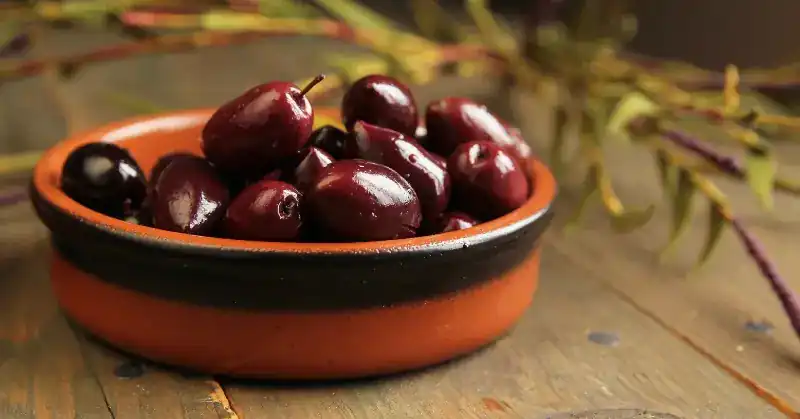
Can Dogs Eat Olives and Garlic?
Garlic is highly toxic to dogs and should never be fed to them. It belongs to the alum family and has a harmful component. Giving garlic to dogs can damage their red blood cells, leading to severe anemia. Symptoms include lethargy, paleness, breathlessness, and weakness in dogs. Avoid olives seasoned with garlic or dishes containing both ingredients.
If you think your pet has ingested garlic-stuffed olives, you must rush to a vet’s clinic to prevent upcoming health consequences. First aid can save your pup from long-term issues and ensure their safety. Thus, it is crucial to err on the side of precaution while thinking about garlic and olives for dogs. Always prioritize their health and nutritional demands.

Can Dogs Eat Olives in Brine?
Are any olives poisonous? As discussed earlier, they are healthy, but one must practice caution while feeding them to dogs. Brine is a saline water made with sodium chloride and water. Olives in brine are significantly harmful to our furry friends.
Their high sodium content may damage their kidneys and lungs. If left untreated, they can lead to fatal health condition in dogs, like electrolyte imbalance, difficulty in urination, seizures, and even death.
If you want to feed your pet olives, choose plain and unseasoned ones free from harmful components. Always rinse them with fresh water to remove all the salt content and pits before serving them to your canine partners. Moreover, vet consultation is still significant in this case.
Final Thoughts
Can dogs eat olives? Yes, olives are non-toxic to dogs in moderate amounts. This blog covers the safety and nutritional benefits of providing olives to canines, including their different types and related products like olive oil.
Frequently Asked Questions (FAQs)
Q: Can dogs eat olive oil?
A: Olive oil is generally safe for dogs in small quantities. It can be beneficial for their skin, coat, and overall health. Avoid using flavored olive oils or giving excessive amounts to dogs.
Q: Can dogs eat olive stones?
A: Dogs can not have olives with stones or pits in excess. They could be hard and sharp, leading to the risk of choking in our pet companions.
Q: Can dogs eat olives with pimentos?
A: Olives with pimentos are safe for dogs in small amounts. Pimentos are not toxic to dogs but should not be the main ingredient in their diet. Monitor for any adverse reactions when introducing new foods to your dogs.

